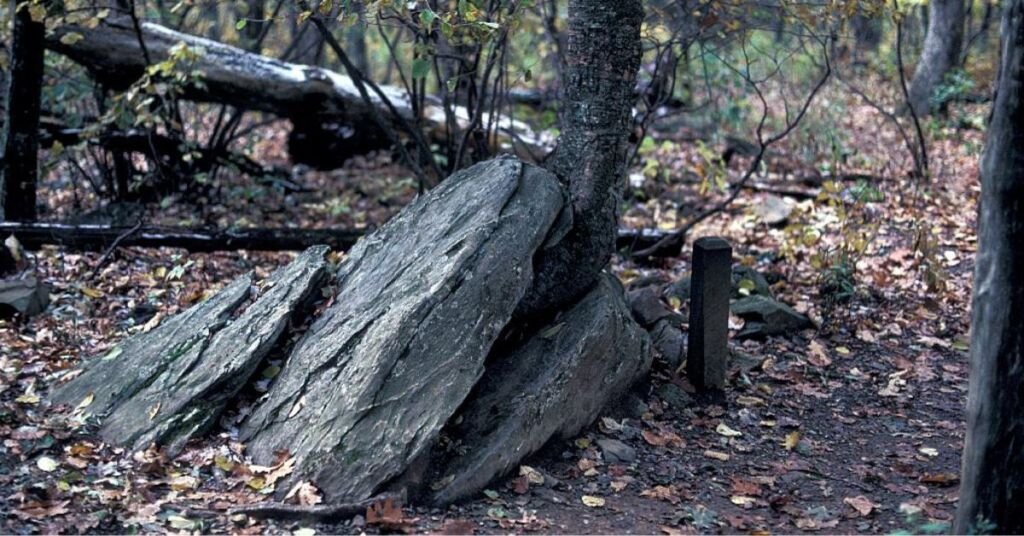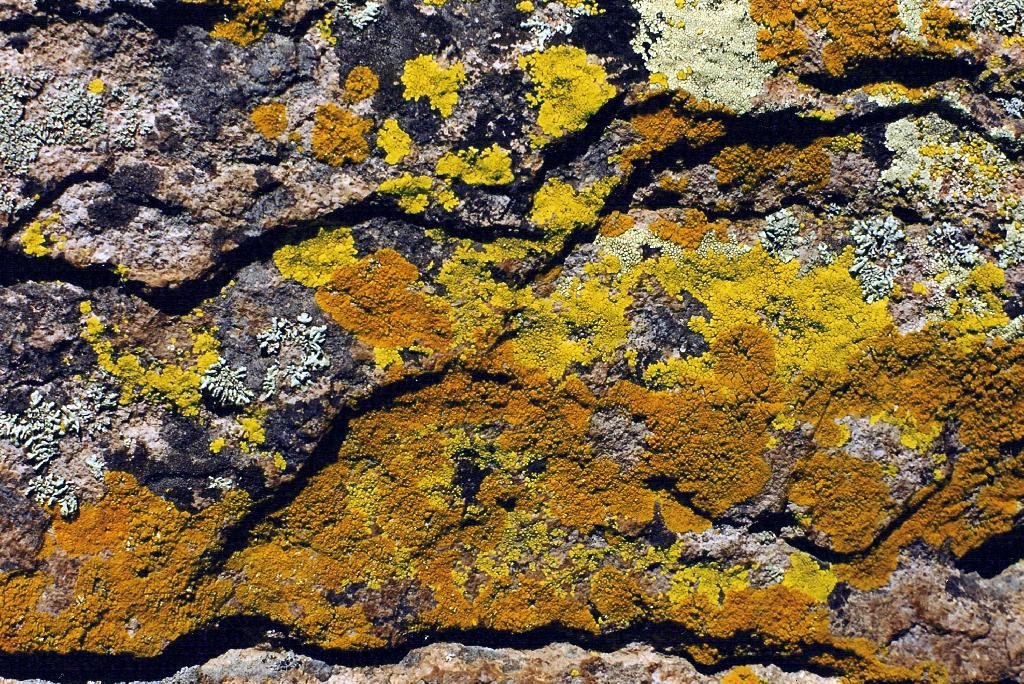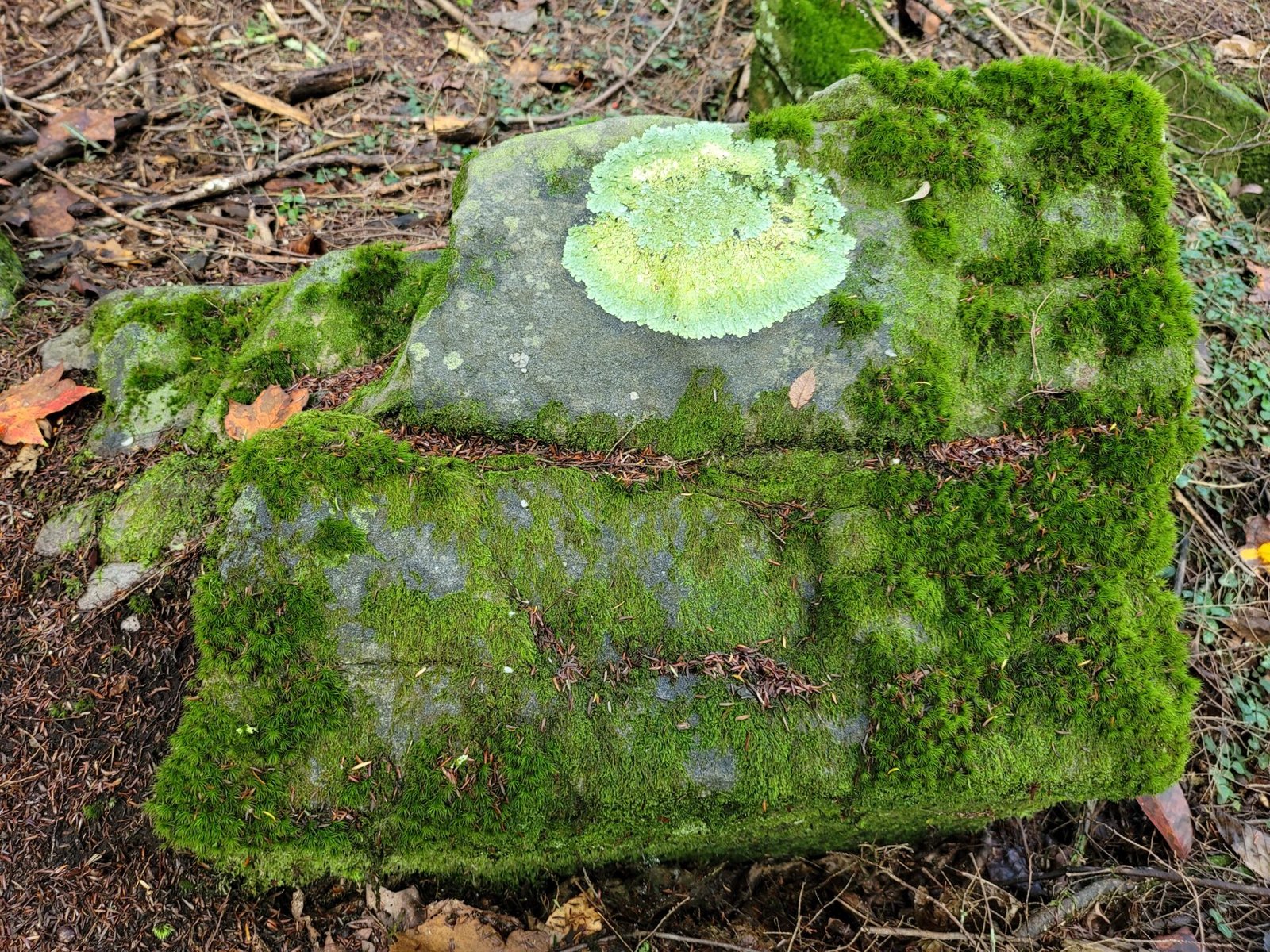Introduction:
The sculpted landscapes we see around us, from towering mountains to weathered cliffs, are not merely the result of dramatic forces like wind and rain. A subtler, yet surprisingly powerful, agent contributes significantly to the breakdown of rocks over time: biological weathering of rocks.

This ongoing process first recognized and explained by 19th-century geologist Ferdinand Cohn, involves the actions of living organisms, from the tiniest microbes to the mightiest trees.
Biological weathering of rocks works its magic in two main ways. Plants and animals physically break apart rocks through their growth and movement. Microscopic organisms, meanwhile, secrete chemicals that dissolve rock minerals. These seemingly insignificant actions, repeated over vast stretches of time, profoundly impact the landscape, transforming once-solid rock into fragmented pieces and contributing to soil formation.
How Does Biological Weathering of Rocks Work?
Biological weathering of rocks occurs through a combination of physical and chemical processes driven by living organisms. Here’s a breakdown:
Physical Processes:
Root Action: Plant roots possess surprising strength. As they grow, they wedge into existing rock cracks and fissures. This persistent pressure, exerted over time, contributes to the biological weathering of the rocks by gradually widening these openings and ultimately causing rocks to fracture.
Burrowing Animals: Animals like earthworms, rabbits, rodents, and many others play a role in the biological weathering of rock. Their digging activities dislodge rocks and expose them to other weathering agents, accelerating the natural breakdown process.
Chemical Processes:
Organic Acids: A key component of biological weathering of rocks is the release of organic acids by various living things. Plant roots, fungi, lichens, and even some microorganisms secrete these acids, which can chemically dissolve specific minerals within rocks. This dissolution leads to a weakening of the rock’s overall structure.

Microbial Respiration: Microbes engage in respiration, and a byproduct of this process is carbon dioxide (CO2). This CO2 mixes with water to form carbonic acid. While a somewhat weak acid, carbonic acid plays a role in the biological weathering of rocks by dissolving minerals such as calcite, which are particularly susceptible to its effects.
Anthropogenic Activities and Biological Weathering of Rocks
Human activities can unintentionally influence or accelerate the processes of this biological weathering. For example:
Deforestation: Removing trees and vegetation reduces the root systems that stabilize the soil and can penetrate rocks. This can lead to increased erosion and exposure of rocks, enhancing the biological weathering of rocks.
Pollution: Acid rain, a result of pollution, alters the chemical balance of soils and water systems. This acidity can increase the rate of biological weathering of the rocks as the acids released by organisms become even more potent in the altered environment.
Organisms Involved in Biological Weathering of Rocks
A diverse range of living organisms contribute to the biological weathering of rocks, each playing a unique role in this transformative process:
Plants: Plants are masters of the biological weathering of the rocks. From the smallest moss to the largest tree, their roots act as wedges, penetrating and gradually widening rock cracks. Additionally, plants secrete acids and chelating agents that directly dissolve rock material to gain nutrients, furthering the weathering process.
Lichens: Lichens are fascinating examples of symbiosis. These organisms, a partnership between fungi and algae, form tight bonds with rock surfaces. To acquire nutrients, they secrete acids that contribute to the biological weathering of rocks by slowly dissolving the underlying minerals.
Bacteria and Fungi: These microscopic powerhouses drive the biological weathering of rocks. Bacteria and fungi release various acids throughout their normal metabolic processes. These acids interact with minerals in rocks, leading to chemical changes and weakening of the rock structure.
Animals: Animals of all sizes contribute to the biological weathering of rocks. Burrowing creatures like earthworms, rabbits, and others displace rocks and expose previously sheltered surfaces to further weathering. Additionally, some animals excrete acidic substances, and their simple movement can physically disturb and break down rocks.
Humans: While we may not immediately think of them as typical players, humans significantly impact the biological weathering of rocks. Activities like deforestation, construction, and pollution alter the environment in ways that can accelerate or change the patterns of biological weathering of rocks.
Types of Biological Weathering of Rocks
Faunal Weathering:
Faunal weathering refers specifically to the role of animals in the biological weathering of rocks. Faunal weathering highlights the contribution of animals to this ongoing process. Animals of all shapes and sizes, from the tiniest insects to the largest mammals, play a role.
Burrowing creatures like earthworms and moles contribute significantly. As they tunnel through soil, they dislodge rocks and expose them to the elements, accelerating their breakdown by other weathering agents.
In arid regions, burrowing rodents like prairie dogs and gophers can have a similar effect, churning up the soil and exposing buried rocks to wind and water erosion. Even seemingly insignificant creatures like ants can contribute to the biological weathering of rocks. Their vast networks of tunnels create pathways for water to infiltrate rocks, further promoting their breakdown.
Floral Weathering:
Floral weathering, a key component of the biological weathering of rocks, showcases the impressive ability of plants to break down rock. Plants contribute through both physical and chemical means. Their root systems act as powerful wedges, pushing into cracks and fissures in rocks. Over time, this persistent pressure widens these openings, eventually causing the rock to fracture. This physical action helps expose fresh rock surfaces to further weathering.
Plants also engage in chemical warfare during the biological weathering of rocks. Their roots secrete organic acids and chelating agents. These chemicals dissolve specific minerals within the rock, weakening its overall structure, which is called biochemical weathering.

Mosses, particularly abundant in damp environments, are particularly effective at this chemical weathering of rocks. In regions with lush vegetation like rainforests, many plants’ combined root action and chemical processes significantly accelerate rock formations’ breakdown.
Anthropogenic Weathering:
Anthropogenic weathering, a dark side of human impact, refers to how our activities unintentionally influence or accelerate the biological weathering of rocks. One major example is deforestation. When we remove trees and vegetation, the root systems disappear. This exposes rocks to increased erosion and other weathering agents, ultimately speeding up the biological weathering of rocks.
Pollution also plays a role. Acid rain, a byproduct of industrial activities, alters soil and water chemistry. This increased acidity enhances the effectiveness of chemical processes involved in the biological weathering of rocks, causing them to break down faster.
Even seemingly innocuous activities like agriculture can contribute. Plowing and tilling the land disrupt the natural balance, making rocks more vulnerable to wind and water erosion, which are key players in the biological weathering of rocks. While these actions may seem isolated, their cumulative effect can significantly alter the pace and patterns of biological weathering of rocks across vast landscapes.
Examples of Biological Weathering of Rocks
The effects of biological weathering of rocks can be seen all around us, from our bustling cities to remote wilderness areas:
A classic example is found in urban environments. Tree roots, seeking water and nutrients, relentlessly force into cracks and exert pressure, ultimately fracturing concrete and pavement.
Lichens form intricate colonies on rocks. These tenacious organisms secrete acids that gradually dissolve rock minerals, carving delicate patterns over time in a striking display of biological weathering of rocks.
Marine mollusks, like mussels and limpets, attach themselves to coastal rocks. Over time, their attachment and feeding activities can contribute to the biological weathering of rocks, making these areas more vulnerable to wave action.
Seeds or plant matter lodged within rock crevices can take root in some environments. As the plant matter absorbs water and expands, it can exert surprising force and widen existing cracks. This is a clear example of biological weathering of rocks.
Tree roots slowly intertwine and penetrate the stonework of historical ruins, dislodging bricks and mortar. This process showcases the relentless power of the biological weathering of rocks over long-time scales.

Importance of Biological Weathering of rocks
The biological weathering of rocks plays a vital and often overlooked role in shaping the diverse landscapes of our planet. Its importance lies in several key areas. Firstly, it’s a driving force behind soil formation. As living things break down rocks, they create a greater surface area for further weathering. The organic matter produced by decomposing organisms enriches this developing soil, laying the foundation for the thriving ecosystems that depend on it.
The biological weathering of rocks is also a crucial mechanism for nutrient cycling. Essential minerals like potassium, phosphorus, and calcium, locked within rocks, are released through weathering processes driven by living organisms. This release makes these nutrients available to plants and other organisms, ensuring a continuous flow of vital elements throughout the ecosystem.

Over vast periods, the biological weathering of rocks becomes a powerful sculpting tool. The gradual process of rocks being split by roots or etched by lichens contributes to a continuous landscape reshaping. These actions create cracks and fissures that become gateways for other weathering forces, amplifying their effects and ultimately contributing to the formation of caves, canyons, and other dramatic geological features.
Additionally, biological weathering of rocks can play a role in regulating the carbon cycle. Carbon dioxide is transferred as organisms interact with rocks, influencing the overall balance of this key greenhouse gas in the atmosphere.
Conclusion
While geological processes often conjure images of powerful earthquakes or fiery eruptions, the subtler power of biological weathering of rocks holds extraordinary sway over our planet. Life unceasingly reshapes the world, from the tiniest roots penetrating cracks to sprawling lichen colonies etching stone.
The biological weathering of rocks is not merely a destructive force. It is a crucial driver of soil creation, nutrient cycling, and the breathtaking diversity of our landscapes. This ongoing process, shaped by countless living organisms throughout millennia, proves that even the seemingly insignificant can hold transformative power.
Understanding the biological weathering of rocks offers a deeper appreciation for the intricate dance between life and the seemingly static world of stone.

